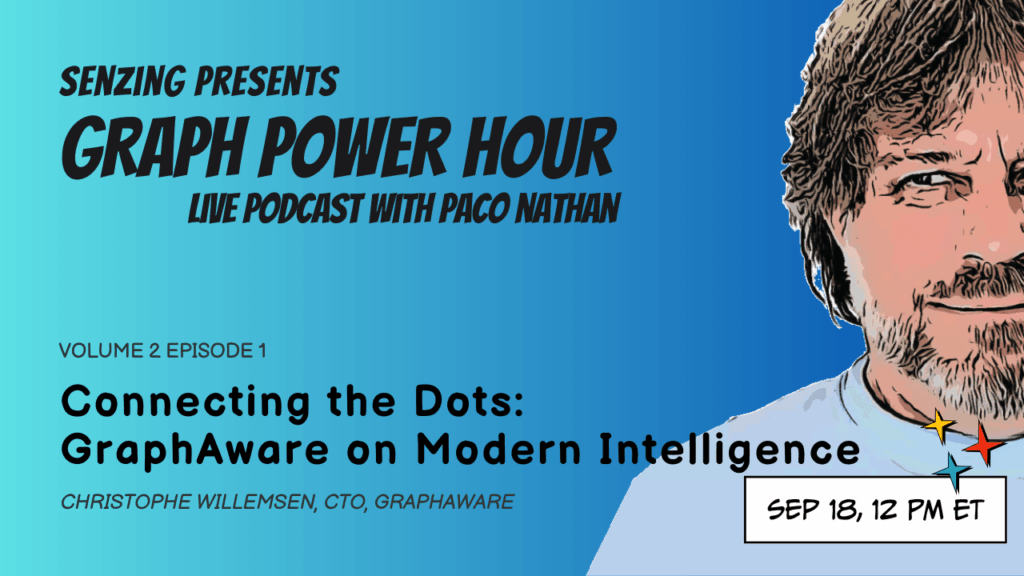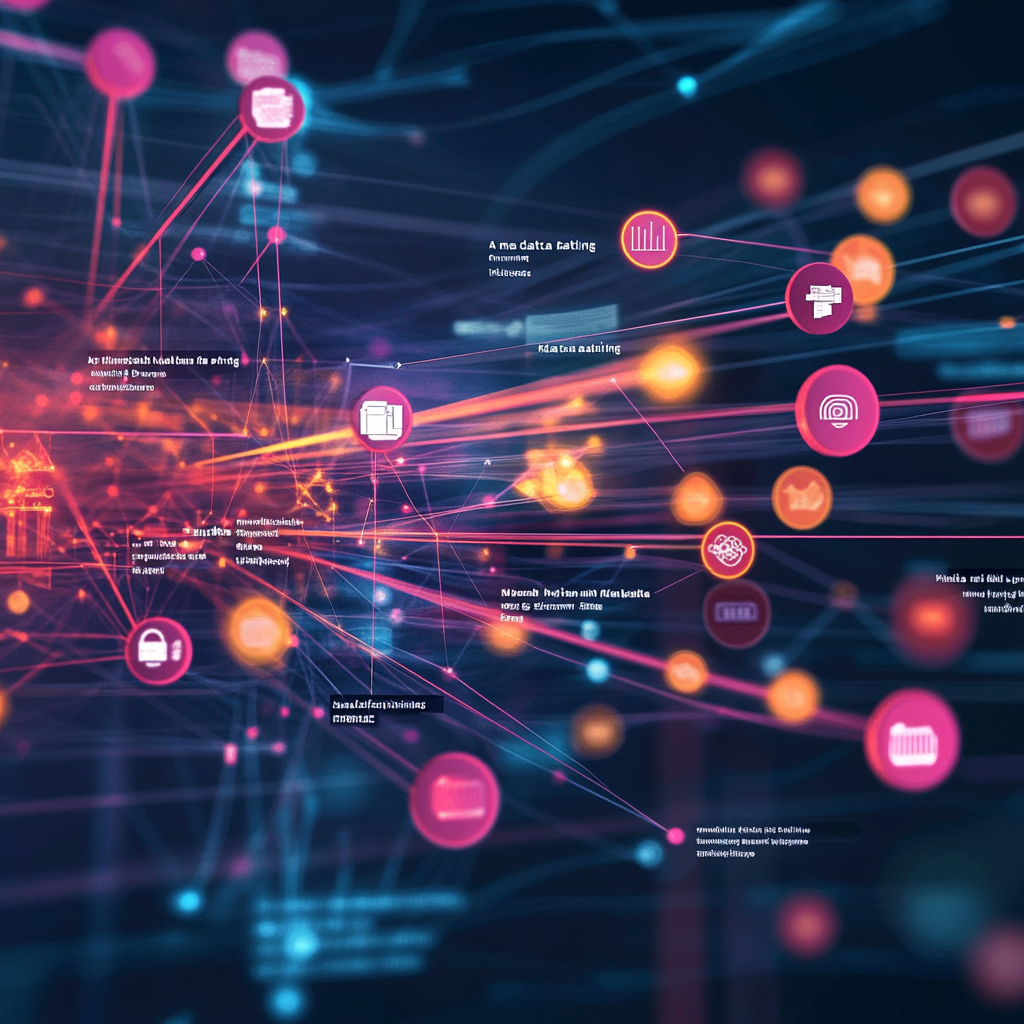What is Fuzzy Matching?
How Fuzzy Matching It Works & Why It Matters
In the realm of data processing and analysis, precision is paramount. Whether managing customer databases, conducting market research or curating content, ensuring data accuracy is fundamental to making informed decisions and driving meaningful outcomes.
However, the reality is that data is often imperfect and prone to errors, inconsistencies, and variations. This is where the technology of “fuzzy matching” is a useful technique within the broader process of Entity Resolution, and serves as a useful tool in the arsenal of Data Quality.

Intro To Fuzzy Matching
Fuzzy matching is a technique that is used to identify and link strings of data that may not be an exact match, but are likely to represent the same entity. Unlike traditional exact matching, which requires identical values, creating a fuzzy match employs algorithms that assess the similarity between strings of text or numerical data, allowing for variations, discrepancies, and errors to be accounted for.
Fuzzy matching makes it easier to connect the dots when you have messy or structurally inconsistent data. With a fuzzy match, you can better determine when real-world entities are the same, despite differences in how they are described or inconsistencies in how data was entered.
Table of Contents
- What Is Fuzzy Matching?
- Intro To Fuzzy Matching
- Why Is Fuzzy Matching Important?
- Is Fuzzy Matching The Same As Entity Resolution?
- Fuzzy Matching Video Transcript
- Understanding Fuzzy Match Algorithms
- Applications of Fuzzy Matching
- Challenges and Considerations
- Future Directions & Innovations
- Conclusion
Why is Fuzzy Matching Important?
The importance of fuzzy matching cannot be overstated in our current data-driven landscape. From enhancing data quality and accuracy to streamlining processes and improving efficiency, fuzzy matching plays a pivotal role across various domains and industries.
If you have many duplicates in your data, whether in a single data source or across multiple data sources, matching duplicates can be harder than you might imagine. Matching data is even harder when you don’t have a key to easily join records together. That’s where fuzzy matching comes in.
Fuzzy matching makes it easier to identify matches and connections, even when you have messy or structurally inconsistent data.
Is Fuzzy Matching the Same as Entity Resolution?
The relationship between fuzzy matching and entity resolution is that of a tool and its application. Fuzzy matching is a technique used to quantify similarity between data elements, and this mechanism can be employed within the broader process of entity resolution to identify, link, or deduplicate records that refer to the same or different entities across diverse datasets. For more on this distinction, read our primer on the differences between Entity resolution and fuzzy matching.
However, fuzzy matching is important for entity resolution accuracy. To get a better understanding of why, watch the video below where Jeff Jonas breaks down fuzzy matching with entity resolution software in a little more detail.
Understanding Fuzzy Match Algorithms
At the heart of fuzzy matching are algorithms designed to quantify the similarity between strings of characters or numerical values. These algorithms employ various techniques such as Levenshtein distance, Jaccard similarity, Jaro-Winkler, Metaphone, and Soundex Encoding to compute the degree of similarity between two strings or datasets. As you will note, some of these algorithms have somewhat archaic foundations. It’s important to remember that not all fuzzy matching is created equal, and the sophistication of what is commonly considered ‘fuzzy matching’ can vary wildly depending upon the algorithms and approaches employed. Technologies involved in creating a fuzzy match may include:
- Levenshtein Distance: This algorithm calculates the minimum number of single-character edits (insertions, deletions, or substitutions) needed to transform one string into another. By measuring the edit distance between strings, the algorithm provides a quantitative measure of similarity, telling you just how strong, weak or fuzzy a match may be.
- Jaccard Similarity: Jaccard similarity computes the similarity between two sets by dividing the size of their intersection by the size of their union. It is particularly useful for comparing sets of words or tokens, making it well-suited for text analysis and natural language processing tasks. This is based upon the Jaccard index, which was originally developed as a ratio of verification, which statistically gauges similarity and diversity of sample sets.
- The Jaro-Winkler algorithm evaluates string similarity in fuzzy matching by first calculating the Jaro similarity coefficient, measuring common character matches and transpositions. It then adjusts the score using a scaling factor to emphasize matching initial characters, enhancing accuracy, especially for strings with similar beginnings. This approach yields a similarity score between 0 and 1, aiding tasks like identifying a fuzzy match, record linkage and duplicate detection where accommodating slight variations or errors is vital for accurate data analysis and management.
- Soundex Encoding: Soundex is an example of an older and more antiquated phonetic algorithm that encodes words based on their pronunciation, allowing for approximate matching of words with similar sounds but different spellings. It used to be applied in applications where spelling variations are common, such as name matching and search engines.

Applications of Fuzzy Matching
The versatility of fuzzy matching extends across a wide range of applications and industries, each benefiting from its ability to handle data variability and uncertainty:
- Data Integration and Cleansing: In large datasets containing heterogeneous sources of information, fuzzy matching helps identify and reconcile duplicate or conflicting records. By consolidating similar records and eliminating redundancies, organizations can maintain data integrity and accuracy.
- Customer 360: Fuzzy matching plays a crucial role in building a Customer 360 view, which is essentially a comprehensive and unified profile of each customer, drawn from various data sources and touchpoints across a business. In this context, fuzzy matching helps improve data accuracy and completeness, even when customer data is inconsistent, incomplete, or entered in different formats. The accuracy of a Customer 360 view is enhanced exponentially when fuzzy matching is applied as part of the more comprehensive approach of entity resolution.
- Customer Relationship Management (CRM): CRM systems rely on accurate and up-to-date customer data to drive marketing campaigns, sales efforts, and customer service interactions. Fuzzy matching enables CRM platforms to identify and merge duplicate customer records, ensuring a unified view of each customer across the organization.
- Master Data Management Systems (MDM): Fuzzy matching technology in Master Data Management (MDM) systems enables the identification and consolidation of similar data entries, accommodating variations like typos or synonyms. By using algorithms to assess similarities between records and identifying a fuzzy match, MDM systems can merge duplicates and ensure data accuracy, supporting informed decision-making and operational efficiency within organizations.
- Fraud Detection and Prevention: In financial services and e-commerce, fuzzy matching is instrumental in detecting fraudulent activities and preventing identity theft. By analyzing patterns and anomalies in transaction data, fuzzy matching algorithms can improve fraud detection systems by identifying a fuzzy match between known fraudsters and records in a data set, drawing attention to suspicious behavior and flagging potential instances of fraud.
- Text Analysis and Information Retrieval: Fuzzy matching algorithms are widely used for tasks including information retrieval and text mining, where the goal is to identify a fuzzy match among documents or search queries with relevant content. By accounting for variations in spelling, syntax, and semantics, fuzzy matching improves the accuracy of search results and recommendation systems.

Challenges and Considerations
While fuzzy matching offers significant benefits in terms of data accuracy and efficiency, it is not without its challenges and limitations:
- Domain Ignorance: One of the biggest challenges to fuzzy matching is that it only compares strings, without consideration of domain knowledge. This is generally overcome when fuzzy matching is used within the wider scope of Entity Resolution.
- Computational Complexity: Some fuzzy matching tools and fuzzy matching algorithms are computationally intensive, particularly when dealing with large datasets or complex comparison criteria. Organizations must carefully balance the trade-offs between accuracy and processing time in identifying a fuzzy match in record sets when implementing certain fuzzy matching solutions.
- Threshold Selection: Choosing the appropriate threshold for similarity measures is a critical aspect of fuzzy matching. Setting the threshold too low may result in false positives, while setting it too high may lead to missed matches. With some fuzzy matching software, fine-tuning the threshold requires domain expertise and iterative experimentation. However there are other systems that require no tuning at all.
- Language and Cultural Variations: Fuzzy matching performance can be influenced by language-specific nuances, cultural conventions, and regional variations in spelling and pronunciation. Adapting algorithms to account for these variations is essential for ensuring robust matching results across diverse datasets.
- Privacy and Security Concerns: In contexts where sensitive or personally identifiable information is involved, such as healthcare or financial services, protecting data privacy and confidentiality is paramount. Organizations must implement rigorous data governance policies and security measures to safeguard against potential risks associated with fuzzy matching. There are approaches to fuzzy matching and entity resolution which address this concern by providing the option of being “air gapped.” (Senzing entity resolution is one such example).
Future Directions & Innovations
As the world-wide volume of data continues to expand exponentially, and the complexity of data integration and analysis tasks increases, the demand for fuzzy matching is poised to rise. As a matter of fact, it is likely that only through the more advanced and comprehensive application of Entity Resolution technology will organizations be able to make sense and utility from the growing avalanche of data.
Numerous emerging trends and innovations are now shaping the future of fuzzy matching and similar technologies. These Include:

- Machine Learning and Natural Language Processing: Leveraging machine learning algorithms and natural language processing techniques, increasingly sophisticated models for fuzzy matching are being developed that can adapt to context-specific patterns and semantics.
- Probabilistic Matching: Probabilistic matching approaches, such as probabilistic record linkage and Bayesian inference, offer a probabilistic framework for fuzzy matching that accounts for uncertainty and probabilistic reasoning.
- Distributed and Parallel Computing: With the advent of distributed computing frameworks including Apache Spark and Hadoop, organizations can leverage parallel processing techniques to scale fuzzy matching algorithms to handle massive datasets and real-time streaming data streams.
- Principle Based: most systems that integrate fuzzy matching base their matching processes upon rules which have to be trained and constantly tuned and adapted. This lack of flexibility increases the chance that a fuzzy match is not as accurate as it could be. Today the most cutting-edge approach applies Principle Based matching technology. This allows the fuzzy matching and entity resolution system to use principles that are based on expected behaviors of attributes, which cover a much wider range of situations without needing every distinct variation to be custom tuned.
- Explainable AI and Interpretability: As fuzzy matching algorithms become increasingly complex, there is a growing need for transparency and interpretability in their decision-making processes. Explainable AI techniques aim to enhance the transparency and accountability of fuzzy matching models by providing insights into their inner workings and decision logic.
Conclusion
- ConclusionIn conclusion, fuzzy matching is a cornerstone of modern data quality best practices, offering a flexible and scalable approach to handling data variability and uncertainty. By harnessing the power of fuzzy matching techniques, organizations can unlock new insights, drive innovation, and make more informed decisions in an increasingly data-driven world. As the increasingly rapid pace of technological advancement accelerates and the complexity of data challenges evolves, the importance of fuzzy matching as a foundational tool for data quality and integration will only continue to grow.
Want Fuzzy Matching & Way More? Try Senzing Entity Resolution Software
Entity Resolution encompasses Fuzzy Matching and so much more. If you’re looking for a solution to help with data quality, fraud detection, or getting more insight from your graph data, you might want to look into Senzing® Entity Resolution.
Try Senzing® entity resolution for yourself for free. See how it performs fuzzy matching on your own data, or use our sample truth set. If you have questions, support at Senzing is always free.
Video Transcript
You’re finding a lot of duplicates in your data, maybe a duplicate as in a data source or maybe you’re trying to match horizontally and you’ve realized that maybe it’s harder than it appeared because you don’t have a key to join it all together and now you’re thinking we need fuzzy matching.
Yes, you do. In fact, you need it plus plus plus. Fuzzy matching? Let me decode that. What do I mean?
Back in the old days, fuzzy record matching would be like using an algorithm called Soundex, do they sound alike. Later it became more advanced, Metaphone, Double Metaphone… Now we’re using Levenshtein for some use cases where, how many letters are off or numbers are off.
Fuzzy record matching would also include things like dates of birth that have dashes in them or slashes in them. Some of them are year, month, day. Some are month, day, year, and so on.
These are all examples of fuzzy comparisons of fields which is, you know, about fuzzy record matching. Now in addition to that, there’s lots of other stuff you need. Check out our software, download it, run our synthetic data set.
It all runs on your own computers, no data flows to Senzing, Inc. and check out what happens when you take fuzzy record matching to the nth and you add a bunch of other essential elements to entity resolution. You can also just run your own data. You’ll find it super fast, super easy, and you should see it for yourself.




